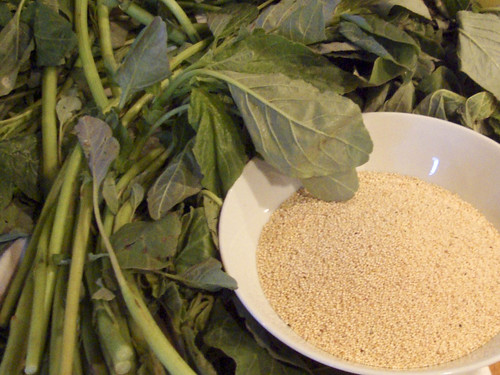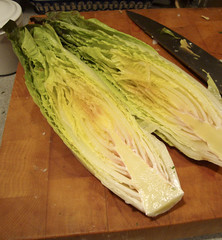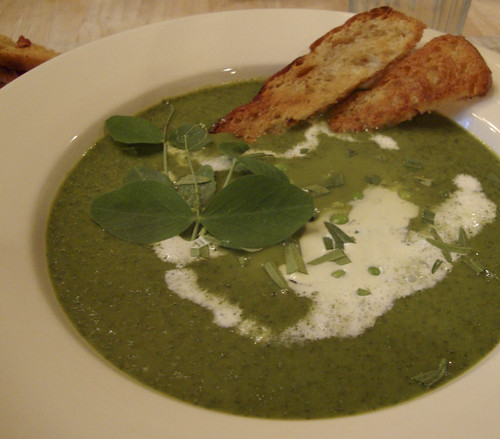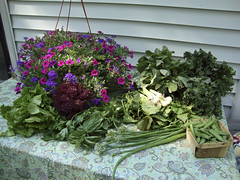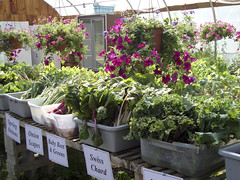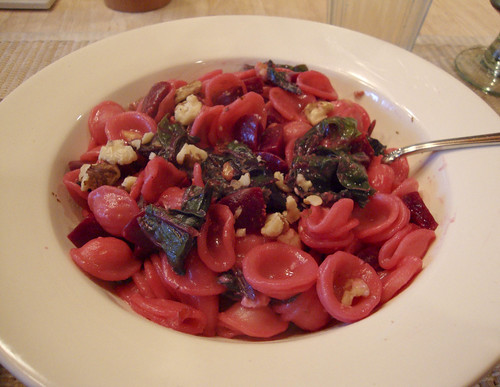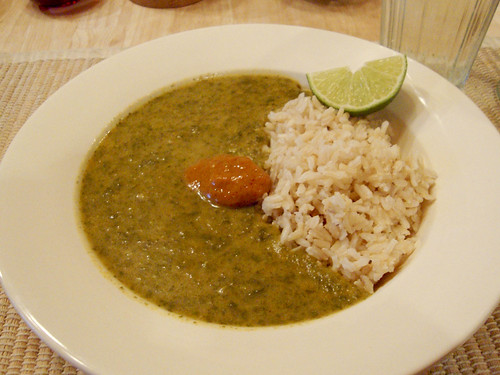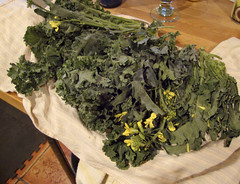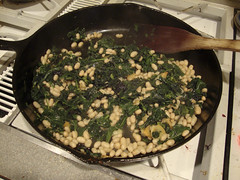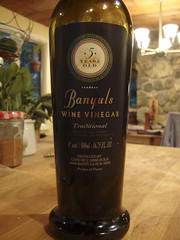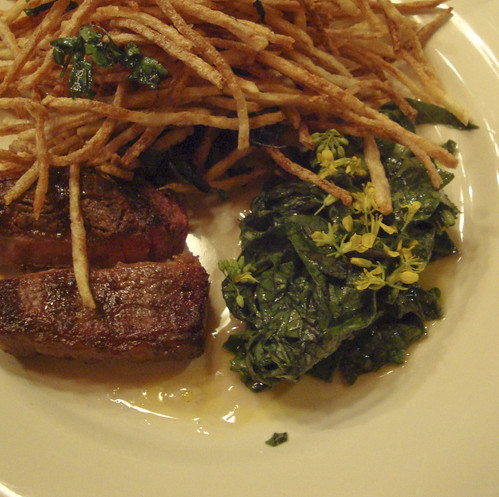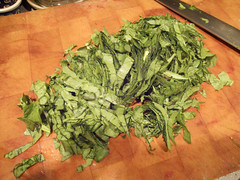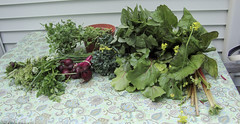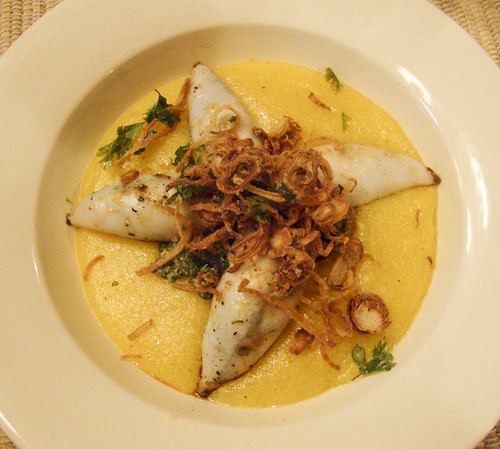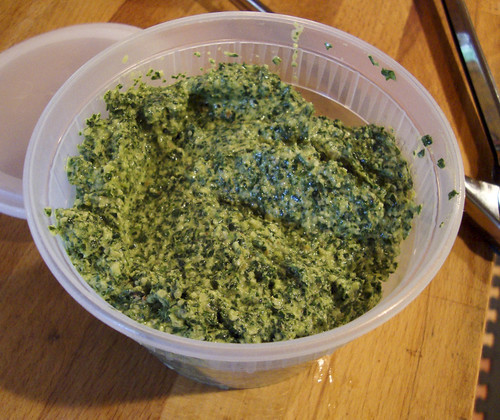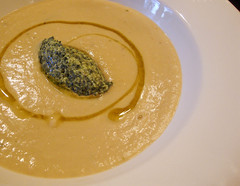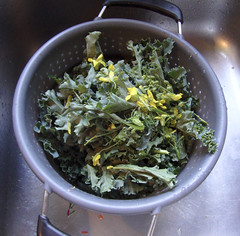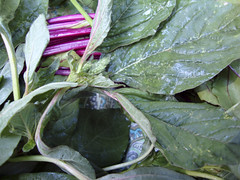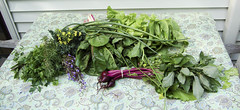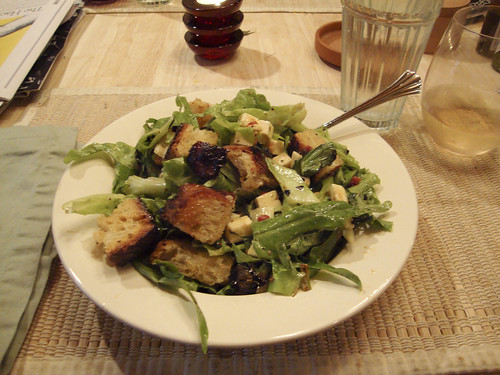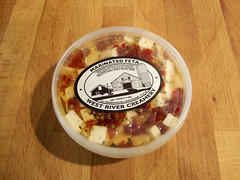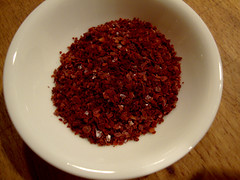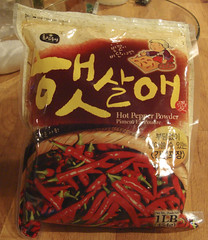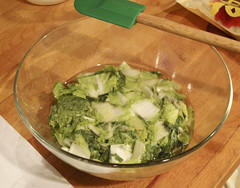 Menu and meal planning is a great habit to develop. There's something very freeing about knowing what's being made for dinner; it take a lot of pressure off. That said, there are nights when I don't want to be handcuffed to my menu plan. So I always give myself permission to cheat and go of plan.
Menu and meal planning is a great habit to develop. There's something very freeing about knowing what's being made for dinner; it take a lot of pressure off. That said, there are nights when I don't want to be handcuffed to my menu plan. So I always give myself permission to cheat and go of plan.
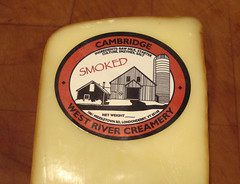
The other night's plan was for an Indian-inspired dinner of chard and chickpeas, rice and chutneys. The night was drizzly and cold and I wanted us to have something creamy and decadent. I put the call out on Twitter for ideas for a decadent and luxe Swiss chard option. In less than 10 minutes, I had enough inspiration to pull together this meal. I had a block of smoked cheddar cheese from West River Creamery and it was a great addition, not too smoky and just rich and creamy enough.
Swiss Chard Gratin
Serves 2-3 as an entrée, 4-6 as a side dish.
We ate this gratin as a main course, but it would make a great side dish. For a lighter option, use chicken or vegetable broth for some or all of the milk and/or cream.
- 1 large bunch Swiss chard, leaves cut off the stems, stems reserved
- 1 small onion, chopped
- 2 tablespoons butter
- 1 tablespoon flour
- 1 cup of milk
- 1/2 cup cream (or use milk)
- 1/2 cup cheese or your choice, grated (I used parmesan and smoked cheddar)
- 1/2 cup breadcrumbs (panko or fresh homemade - don't use the fine ones you buy in tubes at the supermarket)
- olive oil
Preheat your oven to 350 degrees.
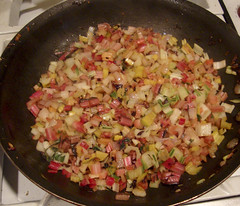
Cut the chard leaves into bite-sized pieces. Chop the stems crosswise into 1/2" pieces. Over medium-high heat, sauté the stems and the onion in a little olive oil in a skillet. when the stems and onion have softened, about 8-10 minutes, add the chard leaves and continue to sauté, stirring occasionally, until the chard leaves are wilted and soft. Set aside.
Make a white sauce: Melt the butter in a small saucepan, and stir in the flour. Cook, over medium heat, stirring for a minute or so, until the roux starts to color - it should turn light tan. Splash in about 1/4 cup of milk, stirring to smooth the sauce out. Add the rest of the milk and the cream, stirring after each addition to smooth out the sauce.
Bring sauce to a simmer and let simmer until the sauce is the consistency of light cream. Taste for seasoning and add salt and pepper to taste. (Hold back a little on the salt as you'll be adding salty cheese.)
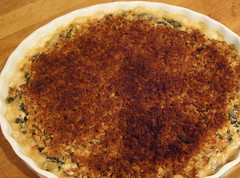
Stir the white sauce into the cooked chard. Stir in the cheese. Taste for seasoning again, adding salt and pepper as needed. Pour the chard mixture into a gratin dish (I used a 9" gratin dish).
In a skillet, toast the breadcrumbs in a little olive oil until just browned. Top the gratin with the toasted crumbs.
Heat the gratin the oven until bubbling, about 20 minutes.
Enjoy!
This Summer, I am chronicling my first CSA (Community Supported Agriculture) experience. My CSA share is from Arrowhead Farm, a farm based in Newburyport, MA. Each week, I am posting about what was in my share and what I'm doing with it. By way of full disclosure, I won my share through a raffle and am not paying for it. However, Arrowhead did not know I was entered in the raffle, and I received no special consideration because of this blog.

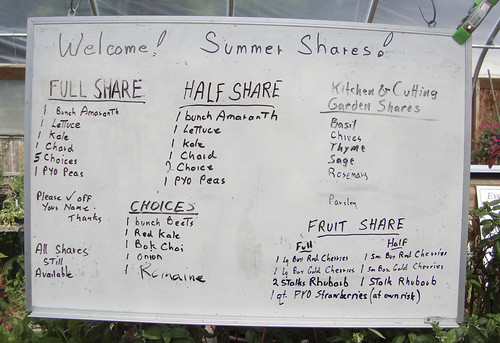
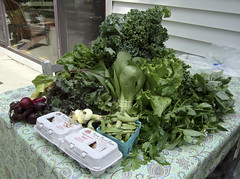 Sorry for the delay in posting, this weekend has been nutso.
Sorry for the delay in posting, this weekend has been nutso. So here's what I think I'm doing with these items:
So here's what I think I'm doing with these items:
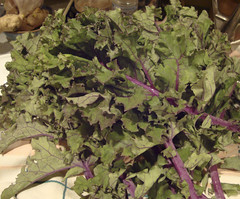 olive oil
olive oil